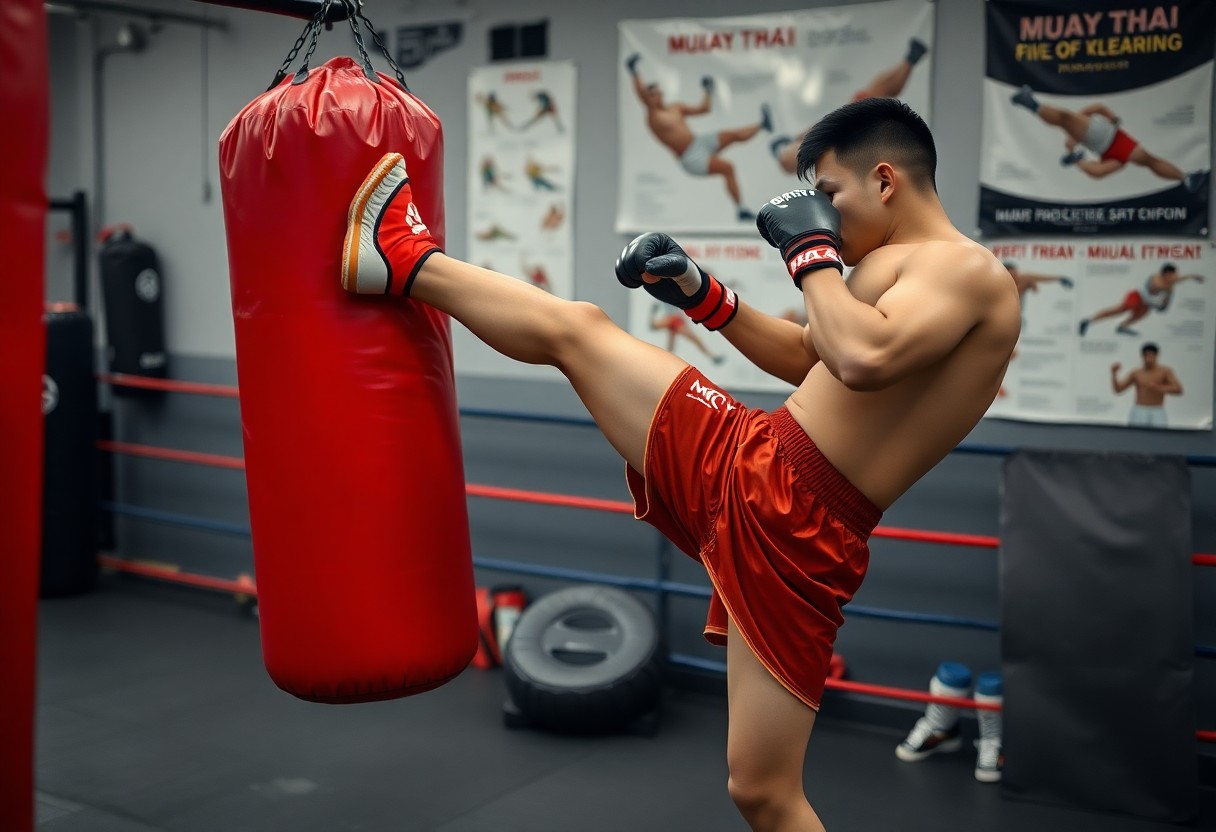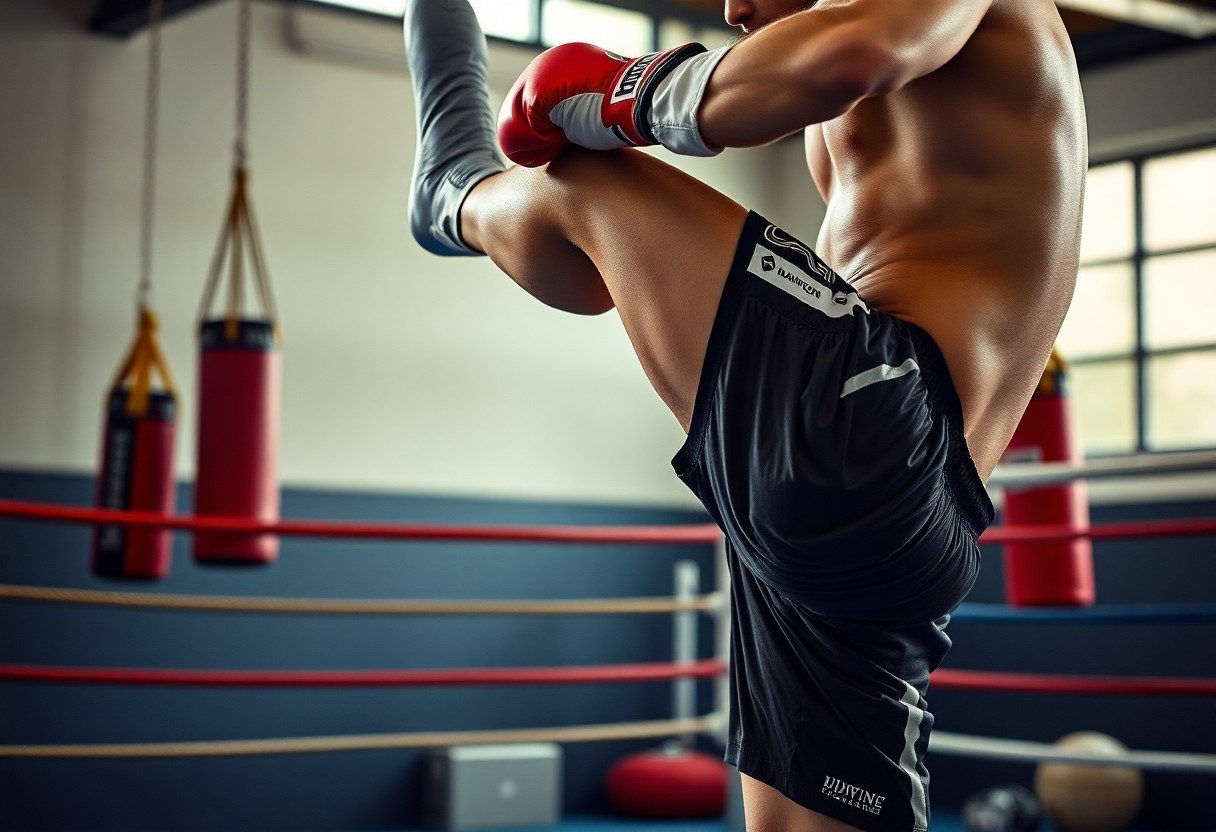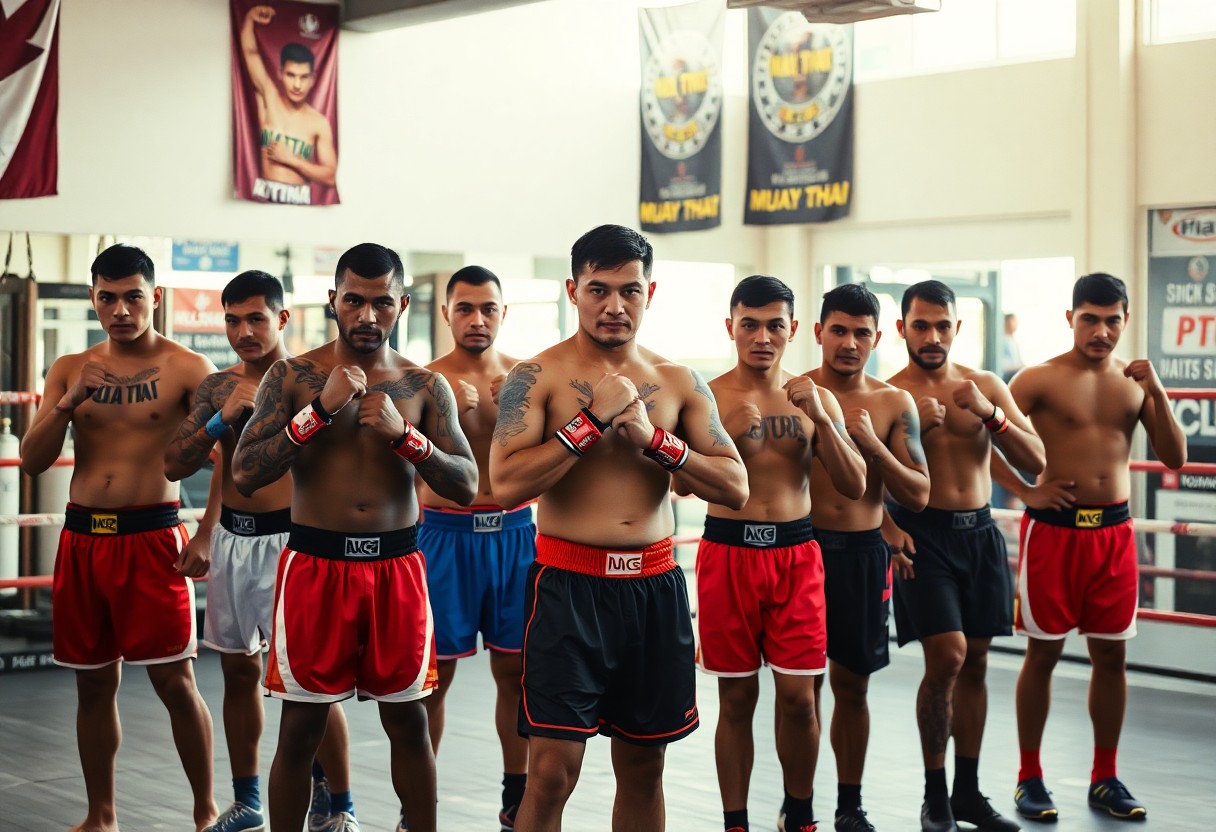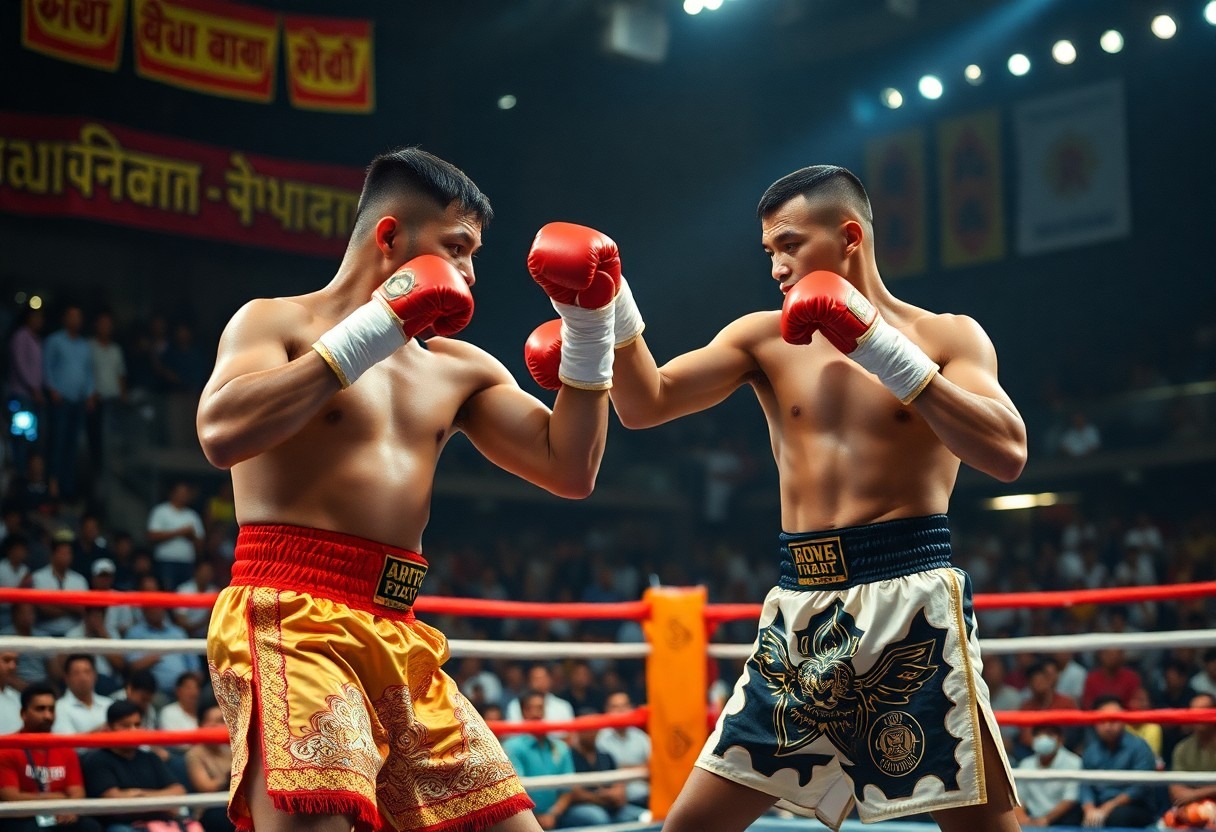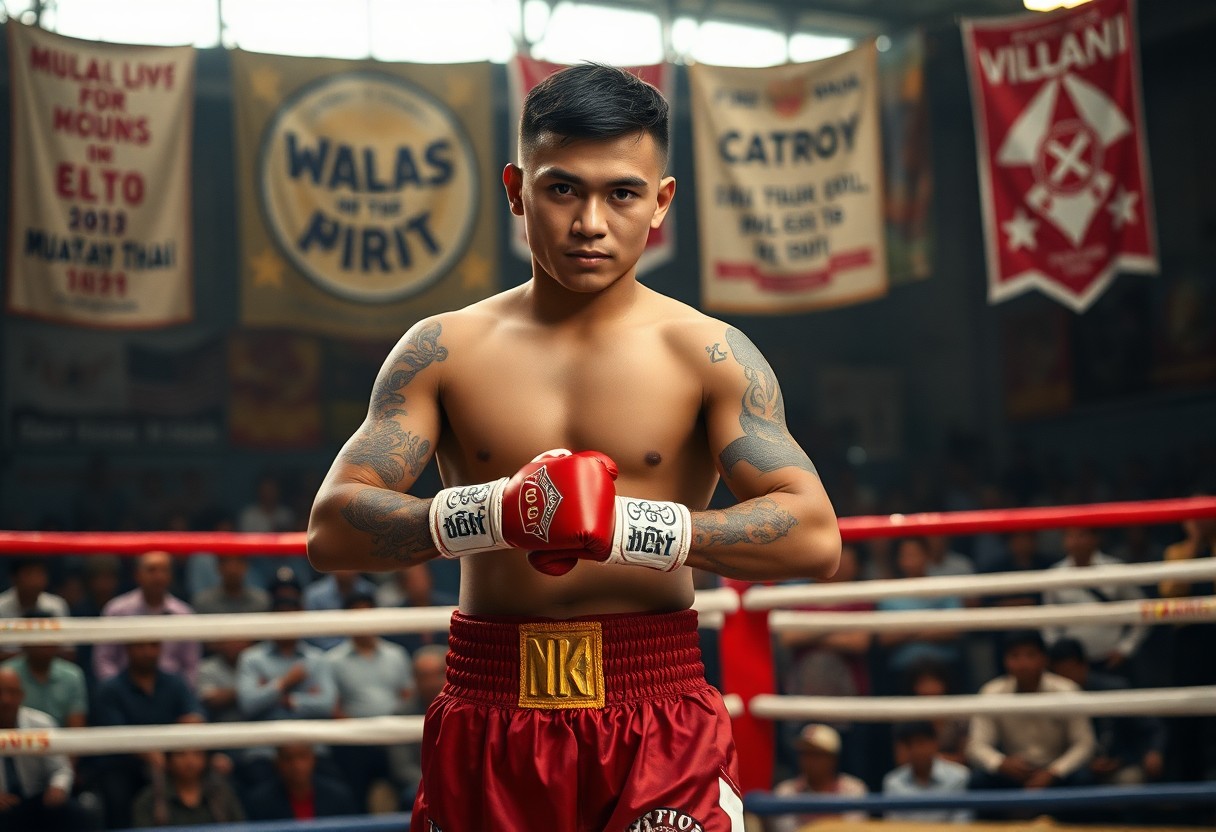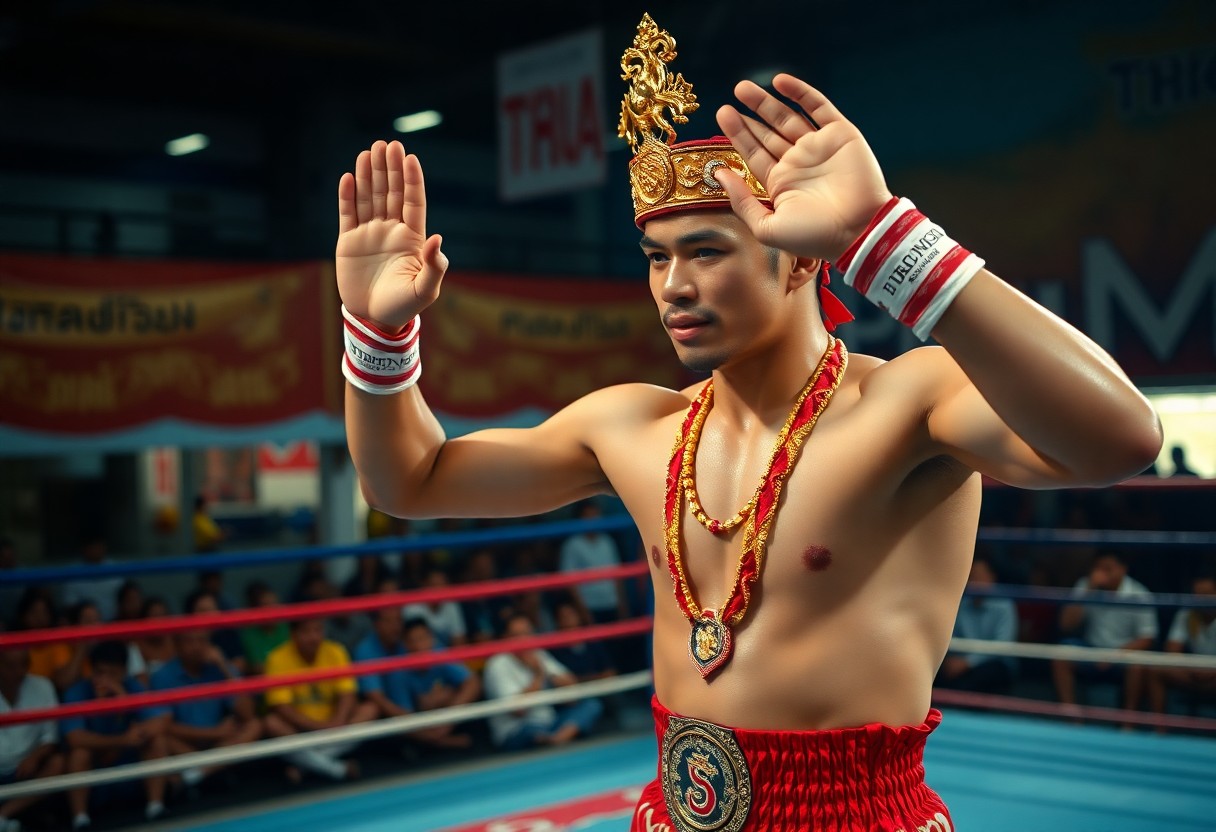
Many fighters and spectators witness the sacred ceremonies of Muay Thai without fully understanding their profound cultural significance. When you observe a Muay Thai match, you’re experiencing centuries-old traditions that transform the ring into a spiritual battleground. The Wai Kru Ram Muay dance honors teachers and ancestors, while the Mongkhon headband carries protective blessings from the fighter’s gym. These rituals aren’t mere pageantry—they represent your connection to Thailand’s warrior heritage and the dangerous art you’re about to witness. Understanding these ceremonies deepens your appreciation for Muay Thai as both a combat sport and a living cultural tradition.
The Wai Kru: Honoring Tradition
You witness one of Muay Thai’s most sacred moments when fighters perform the Wai Kru before each bout. This ritualistic dance serves as both spiritual preparation and physical demonstration of respect to teachers, ancestors, and the art itself. Each movement carries deep meaning, from the deliberate circling of the ring three times to the precise hand gestures that acknowledge the four directions. The ceremony transforms the fighting space into a temple, where you observe fighters transitioning from ordinary individuals into vessels of ancient warrior tradition.
Historical Background of the Wai Kru
Ancient Siamese warriors developed the Wai Kru ceremony over 500 years ago as spiritual armor before battle. You can trace its origins to battlefield rituals where soldiers honored their commanders and sought protection from guardian spirits. The practice evolved alongside Muay Thai itself, incorporating elements from Hindu-Buddhist traditions and indigenous animistic beliefs. During King Naresuan’s reign in the 16th century, royal guards formalized these movements, creating the standardized sequences you see today in modern competitions.
Significance of the Ritual in Muay Thai
Your understanding of Muay Thai remains incomplete without grasping the Wai Kru’s spiritual dimensions. Fighters believe the ritual channels protective energy and connects them to their lineage of teachers stretching back centuries. Each gesture represents gratitude, humility, and respect for the art’s sacred nature. The ceremony also serves practical purposes, allowing fighters to assess the ring dimensions, test their flexibility, and mentally prepare for combat while honoring the traditions that preserve Muay Thai’s cultural integrity.
Beyond its spiritual aspects, the Wai Kru functions as a living repository of Thai cultural identity that you witness being passed down through generations. Master trainers spend years teaching students the proper execution of each movement, ensuring that regional variations and family-specific techniques survive. In Bangkok’s Lumpinee Stadium, judges traditionally score fighters partly on their Wai Kru performance, recognizing technical precision and authentic expression of the art’s deeper meanings. Fighters who rush through or poorly execute the ceremony often face criticism from purists, highlighting how this ritual maintains standards of respect within the sport. The ceremony also creates a meditative state that helps fighters overcome pre-fight anxiety, with many reporting that the familiar movements calm their minds and center their focus before engaging in combat.
The Mongkhon: A Symbol of Respect and Identity
You’ll notice the sacred headband adorning every Muay Thai fighter as they enter the ring – the Mongkhon represents the spiritual bond between student and teacher that extends far beyond physical training. This circular headpiece, traditionally woven from blessed cloth or rope, carries the protective prayers and accumulated wisdom of the fighter’s lineage. No fighter may touch or wear another’s Mongkhon, as each piece contains the specific blessings and spiritual energy transferred from their kru. The headband must be removed before competition begins, symbolically transferring the teacher’s protection to the fighter’s own skill and preparation.
Cultural Importance of the Mongkhon
Buddhist monks typically bless each Mongkhon during special ceremonies, infusing the headpiece with protective mantras and sacred intentions. The circular design represents the endless cycle of learning and respect that defines the teacher-student relationship in Muay Thai culture. Traditional fighters often inherit Mongkhons from previous generations, creating an unbroken chain of spiritual protection that can span decades. Disrespecting someone’s Mongkhon is considered one of the gravest offenses in Thai boxing culture, equivalent to insulting their family lineage and spiritual foundation.
The Process of Receiving a Mongkhon
Your kru will present you with a Mongkhon only after demonstrating unwavering dedication, technical proficiency, and moral character over months or years of training. This ceremony typically occurs during a formal ritual where senior students and other instructors witness the sacred transfer. The timing varies dramatically between camps – some traditional schools require three to five years of consistent training, while others focus on the fighter’s spiritual readiness rather than a fixed timeline.
The actual presentation ceremony involves specific protocols that vary between different camps and regions of Thailand. Your teacher will place the Mongkhon on your head while reciting protective prayers, often in ancient Pali or Thai language, invoking blessings from Buddhist deities and warrior spirits. Many camps require you to demonstrate the complete Wai Kru Ram Muay sequence flawlessly before receiving this honor, as the Mongkhon and the ritual dance are spiritually interconnected. Some traditional krus will take you to a Buddhist temple where monks perform additional blessing ceremonies, particularly if you’re preparing for significant competitions or turning professional. The Mongkhon becomes your responsibility to maintain and protect – you must store it in a high, clean place and never allow it to touch the ground or be handled carelessly by others.
The Ram Muay: Dance as an Expression of Heritage
You observe a mesmerizing transformation as fighters transition from the Wai Kru into the Ram Muay, a ritualistic dance that tells stories passed down through centuries. Each movement carries deep meaning, with fighters embodying characters from Thai mythology, historical battles, or honoring their specific camp’s lineage. The Ram Muay serves as both spiritual preparation and cultural preservation, allowing fighters to connect with their ancestors while demonstrating their training lineage to spectators. Unlike the standardized Wai Kru, the Ram Muay varies dramatically between different camps and regions, creating a unique fingerprint that identifies where each fighter learned their craft.
Elements and Movements of the Ram Muay
You’ll recognize distinct patterns as fighters move through their Ram Muay, with each gesture representing specific animals, deities, or legendary warriors. Common movements include the eagle soaring through clouds, symbolizing freedom and power, or the hermit washing his face, representing purification before battle. Fighters often incorporate defensive and offensive techniques disguised as dance moves, subtly warming up their muscles while maintaining the ceremony’s sacred nature. The tempo follows the accompanying Sarama music, with movements becoming more intense as the rhythm accelerates, building toward the moment when gloves are blessed and the actual combat begins.
The Ram Muay’s Role in Fostering Connection
You witness how the Ram Muay creates an invisible bridge between fighter, trainer, and audience, establishing mutual respect before violence unfolds. Spectators often identify fighters’ training camps simply by observing their Ram Muay style, creating immediate connections and rivalries based on lineage rather than individual personalities. This dance transforms the ring into a temporary temple where cultural transmission occurs, ensuring that ancient knowledge survives through each new generation of practitioners.
Your understanding deepens when you realize that the Ram Muay functions as Thailand’s living museum in motion. Master trainers spend years teaching students not just the physical movements, but the stories behind each gesture, creating an oral tradition that preserves historical events and mythological tales that might otherwise be forgotten. Foreign fighters learning authentic Ram Muay sequences often discover they’re absorbing centuries of Thai cultural knowledge, from Buddhist philosophy to ancient warfare tactics. The dance also serves as a psychological tool, allowing fighters to enter a meditative state that bridges the gap between spiritual preparation and physical readiness. Veteran fighters report that performing their Ram Muay in familiar surroundings provides comfort and confidence, while executing it in foreign venues helps them carry their cultural identity into hostile territory, maintaining connection to their roots regardless of geographic location.
Spiritual Elements: Beyond the Physical
You encounter a profound spiritual dimension in Muay Thai that transcends mere athletic competition. Buddhist philosophy permeates every aspect of the art, from the meditation-like focus required during training to the karmic belief that your actions in the ring reflect your character outside it. Thai fighters often visit temples before major fights, seeking blessings from monks who understand the warrior’s path. The concept of “nam jai” – water from the heart – represents the pure intention fighters must carry, while the belief in protective spirits watching over combatants adds layers of meaning to each ritual performed.
The Role of Spirituality in Muay Thai Practices
Buddhist teachings shape every pre-fight ceremony you observe, with fighters seeking protection through merit-making and meditation. Approximately 95% of Thai fighters practice some form of spiritual preparation before entering the ring, whether through temple visits, amulet blessings, or personal prayer rituals. The spiritual foundation extends beyond superstition – it provides mental fortitude and emotional balance that enhances physical performance. Many champions credit their spiritual practices with helping them overcome fear and maintain composure under pressure.
Infusing Personal Beliefs into the Rituals
You witness fighters adapting traditional ceremonies to incorporate their individual spiritual beliefs and family traditions. Personal amulets, family photographs, and religious symbols often accompany the standard Mongkhon and Prajioud, creating unique spiritual armor for each warrior. Some fighters include Christian prayers alongside Buddhist chants, while others honor ancestral spirits through modified Wai Kru movements that reflect their regional heritage.
Modern Muay Thai has evolved to accommodate diverse spiritual backgrounds while maintaining its Buddhist foundation. International fighters studying in Thailand often blend their home religious practices with traditional Thai rituals, creating hybrid ceremonies that honor both cultures. Champions like Buakaw Banchamek have demonstrated how personal spiritual practices can enhance rather than replace traditional elements – he incorporates meditation techniques learned from forest monks into his pre-fight preparation. Your spiritual journey in Muay Thai becomes deeply personal, with experienced practitioners developing their own relationships with protective spirits and finding meaning in rituals that resonate with their individual beliefs while respecting the art’s sacred origins.
Contemporary Relevance: Modern Muay Thai and Tradition
You observe a fascinating tension in today’s Muay Thai arenas where ancient traditions meet modern commercial demands. Professional stadiums like Rajadamnern and Lumpinee have adapted ceremonial timing to accommodate television broadcasts, yet fighters still refuse to compete without their mongkhon and prajioud. This balance reflects how deeply embedded these rituals remain in the sport’s identity, even as Muay Thai expands into international markets worth over $2 billion annually.
The Evolution of Rituals in Competitive Environments
Modern competition formats have compressed traditional ceremonies without eliminating their essence. UFC and ONE Championship events allocate specific timeframes for Wai Kru performances, typically limiting them to 2-3 minutes compared to the traditional 5-10 minutes in Thai stadiums. Fighters adapt by focusing on core movements while maintaining spiritual significance, demonstrating how ritual flexibility preserves cultural authenticity within commercial constraints.
Reclaiming Cultural Practices in a Globalized Sport
International Muay Thai organizations increasingly emphasize proper ritual education as the sport gains Olympic recognition consideration. The World Muaythai Council now requires certified instructors to complete cultural training modules covering ceremony meanings and execution. This systematic approach addresses concerns about cultural appropriation while ensuring non-Thai practitioners understand the spiritual dimensions beyond physical techniques.
Training camps worldwide have begun incorporating Thai cultural immersion programs, with facilities like Sitsongpeenong and Tiger Muay Thai reporting 70% of foreign students now participate in traditional ceremony workshops. These programs teach proper mongkhon handling, Wai Kru choreography, and the historical context behind each gesture. Some gyms partner with Thai cultural centers to provide authentic instruction, while others invite former Lumpinee champions to share their knowledge. The result creates a generation of international fighters who approach these rituals with genuine respect rather than mere performance. Several prominent non-Thai champions, including Nieky Holzken and Giorgio Petrosyan, have become vocal advocates for preserving traditional elements in modern competition, arguing that removing cultural components diminishes the art’s unique identity in an increasingly homogenized combat sports landscape.
Final Words
The ancient rituals of Muay Thai offer you a profound window into Thailand’s cultural soul, where every gesture carries centuries of meaning. As you witness the graceful Wai Kru dance and observe fighters donning their sacred Mongkhon headbands, you’re experiencing traditions that transform combat into ceremony. These rituals connect you to the spiritual foundation of the art, where respect for teachers, ancestors, and opponents creates a deeper understanding beyond physical technique. Your appreciation of Muay Thai becomes complete when you recognize these ceremonies not as mere formalities, but as living expressions of Thai heritage that continue to guide practitioners worldwide.

